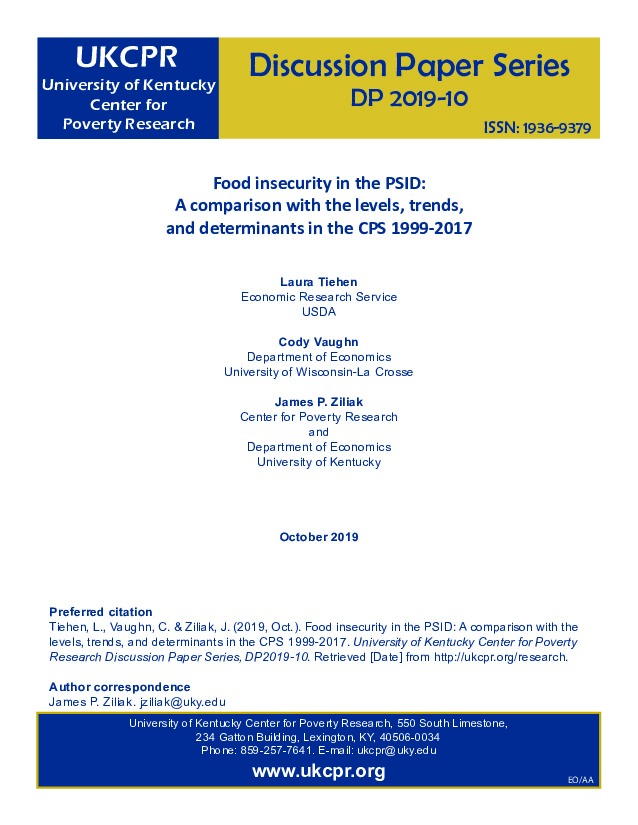Food insecurity, defined as a household-level economic and social condition of limited or uncertain access to adequate food, is a substantial threat to public health in the United States. In 2017, nearly 12% of households reported being food insecure, affecting over 40 million persons. Numerous studies have documented that food insecurity is associated with substantive negative health outcomes among children and families, and leads to excessive health care expenditures. In this paper we compare the levels, trends, and determinants of food insecurity in the University of Michigan’s Panel Study of Income Dynamics (PSID) to those from the official source of food security statistics in the U.S.—the Food Security Supplement of the Current Population Survey—from 1999-2017. The PSID, which was begun in 1968, is the leading longitudinal household survey on work, welfare, family structure, consumption, health, and wealth. The survey added measures of food security in the 1999-2003 waves, and again in the 2015-2017 waves. This offers the first opportunity to answer key pressing scientific and policy issues such as the persistence of food insecurity within and across generations, and how changes in food security affect and are affected by the level and change in consumption, wealth, and broader measures of health. This paper aims to describe how well levels and trends in food insecurity in the PSID align with the CPS, and the sources of why they might differ. In addition, we examine the robustness of key model predictors of food insecurity—income, race, education, disability status, marital status—across the surveys. We find that, although the estimated food insecurity rates in the PSID are lower than those in the CPS, the trends over time in the two datasets are similar. Food insecurity rates in the PSID and CPS converge from the 1998-2002 period to the 2014-16 period when food insecurity rates closely match those in the CPS. Our findings, taken as a whole, lend credence to the use of the PSID for food insecurity research.
Research
PSIDPDF Thumbnail
